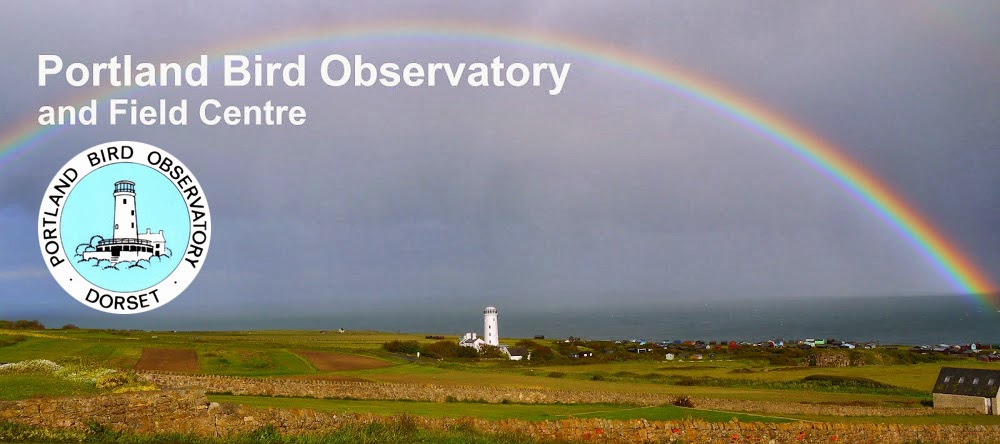As the season moves on we start to witness the change in numbers of certain birds and today marked the beginning of the end of
Tree Pipit passage as the
Meadow Pipits will begin taking over. Although today's count of 18
Tree Pipits was the highest for a few days, the tally of 200
Meadow Pipits was the highest of the autumn so far. The Wagtails also put in a good display with 59
Yellow Wagtails (including a good number pitching in the neighbouring fields), 16
Grey Wagtails and 9
Alba Wagtails (including 2 definite
White Wagtails).
Sylvia warblers were seen in good numbers for the first time within the Bill area with 16
Blackcaps and 4
Garden Warblers. Other notable counts included: 114
Wheatears, 600+
Swallows, 10
Sedge Warblers, 2
Reed Warblers and 5
Redstarts including a British controlled bird. Singles of
Pied Flycatcher,
Short-eared Owl,
Merlin and
Greenshank rounded off the days land-based totals. A brief evening sea watch was rewarded with 16
Manxies, 8
Balearic Shearwaters and 1
Sandwich Tern.
Elsewhere on the island, the
Ortolan Buntings showed early doors for a few lucky birders at High Ang1e Battery; a
Hobby was over Barleycrates Lane, 4
Spotted and a
Pied Flycatcher were at Southwell and Ferrybridge maintained its steady course with: 1
Grey Wagtail, 7
Wheatears, 1
Yellow Wagtail, 1
Sanderling, 48
Dunlin, 65
Ringed Plover, 18
Turnstone and 1
Sandwich Tern. Rather more unexpectedly, the summering
Whooper Swan from further up the Fleet was spotted off Chesil during the morning before it evidently returned to Abbotsbury.
A massive thank you to Martin King for this fantastic selection of photos including this Araneus Sp. © Martin King:
Martin spent a while this afternoon photographing our pond life (and occasionally having a snooze in the sun) and has produced some excellent shots of Common Pond Skaters, including the moment an unfortunate Marmalade Hoverfly strayed too close to the voracious predator © Martin King:

Unfortunately, earlier this autumn our resident male (and very nicely marked) Sparrowhawk hit a window and died. Fortunately he successfully managed to produce a minimum of 3 offspring this summer and these progeny, along with the resident female, have been putting on an excellent display throughout the obs area © Martin King

Today's Ortolan action was brief, with at least one bird showing early morning only at High Angle Battery - later searches there and at Fancy's Farm drew a blank © Roger Hewitt:




















































